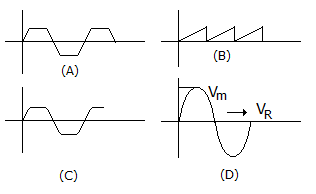Electronics and Communication Engineering - Analog Electronics
Exercise : Analog Electronics - Section 20
- Analog Electronics - Section 11
- Analog Electronics - Section 21
- Analog Electronics - Section 20
- Analog Electronics - Section 19
- Analog Electronics - Section 18
- Analog Electronics - Section 17
- Analog Electronics - Section 16
- Analog Electronics - Section 15
- Analog Electronics - Section 14
- Analog Electronics - Section 13
- Analog Electronics - Section 12
- Analog Electronics - Section 1
- Analog Electronics - Section 10
- Analog Electronics - Section 9
- Analog Electronics - Section 8
- Analog Electronics - Section 7
- Analog Electronics - Section 6
- Analog Electronics - Section 5
- Analog Electronics - Section 4
- Analog Electronics - Section 3
- Analog Electronics - Section 2
31.
CMRR of an op-amp is about 0.1.
32.
A transistor amplifier has poles at
s1 = - 0.000245 x 109 rad/sec.
s2 = - 0.0748 x 109 rad/sec.
s3 = - 0.670 x 109 rad/sec.
s4 = - 4.38 x 109 rad/sec.
The upper 3 dB frequency of the amplifier will be
s1 = - 0.000245 x 109 rad/sec.
s2 = - 0.0748 x 109 rad/sec.
s3 = - 0.670 x 109 rad/sec.
s4 = - 4.38 x 109 rad/sec.
The upper 3 dB frequency of the amplifier will be
33.
In the circuit of figure for sinusoidal input the waveform of the output will be as shown in


34.
An engineer designs an amplifier to have a voltage gain of 60, but when constructed it only had a gain of 50. What value of feedback will double the gain?
35.
The maximum theoretical efficiency for class A amplifier is
Quick links
Quantitative Aptitude
Verbal (English)
Reasoning
Programming
Interview
Placement Papers